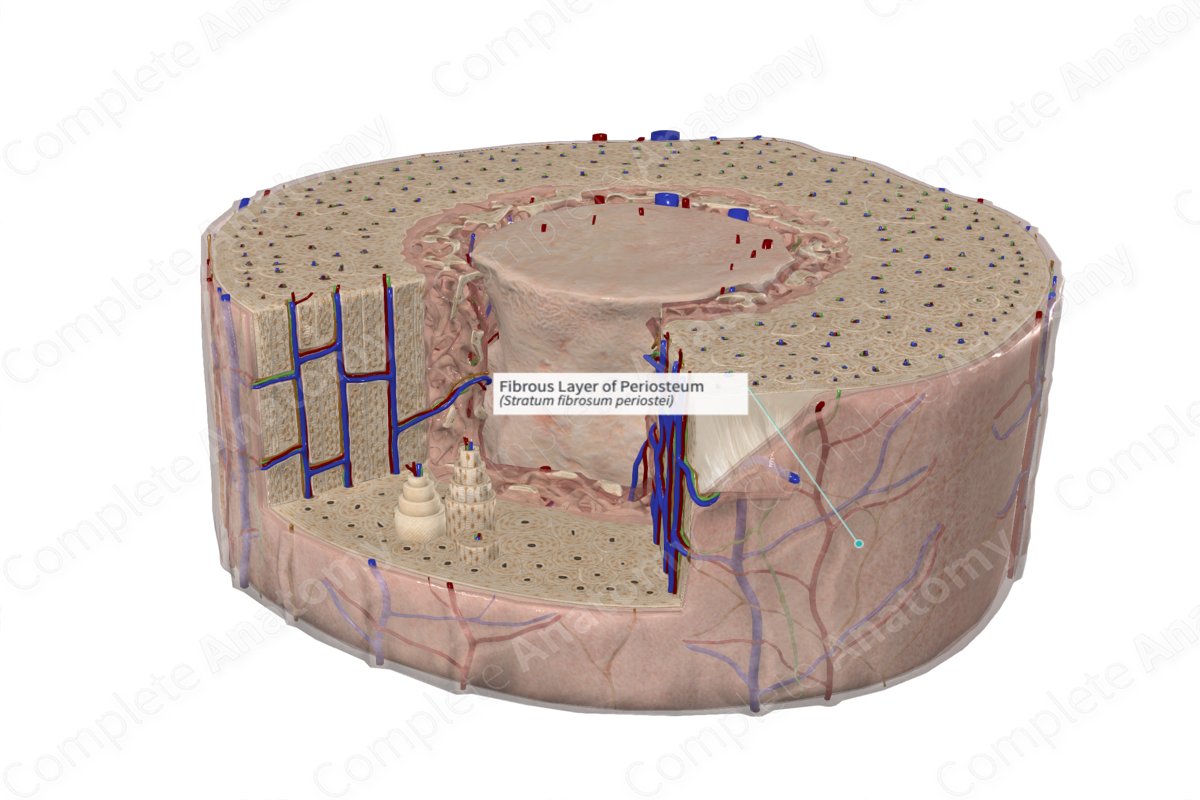
Quick Facts
Periosteum is a specialized connective tissue covering all bones of the body; in adults, it consists of two layers that are not sharply defined, the external fibrous layer being a network of dense connective tissue containing blood vessels, and the internal osteogenic layer composed of more loosely arranged collagenous bundles with spindle-shaped connective tissue cells, osteogenic precursor cells, and a network of thin elastic fibers (Dorland, 2011).
Related parts of the anatomy
Structure/Morphology
The fibrous layer of periosteum is the outermost enveloping layer of the bone. It consists of dense regular connective tissue containing fibroblast cells dispersed among an organized framework of collagen fibers. It may contain some elastic fibers, however, not as much as the osteogenic layer. Also found within the fibrous layer of periosteum are several blood and lymphatic vessels, as well as nerves (mainly sensory). These form plexuses before branching into the underlying compact bone below, via perforating canals, also known as Volkmann’s canals (Omelyanenko et al., 2016).
Anatomical Relations
The fibrous layer of periosteum covers the entire bone except for its articular surfaces, and areas of muscle attachment. This is in contrast to the osteogenic layer of periosteum which can be discontinuous around the metaphysis of the bone. Fibers of tendons, ligaments, and fascia attach to the fibrous layer of periosteum, before extending further in the compact bone.
Function
The fibrous layer of periosteum provides mechanical strength to the periosteum, which in turn provides considerable support to the bone. It also assists in transmission of mechanical forces produced by a muscular contraction across a greater area of the bone. The fibrous layer of periosteum has an integral role in the maintenance of bone structure by means of the vasculature and nerves which it transmits to the underlying bone. Due to the presence of sensory receptors, the fibrous layer of periosteum is the most pain-sensitive area of bone, which can be caused by a number of factors including trauma and osteoarthritis (Standring, 2016). In addition, the periosteum is thought to play a major role in the bone-healing process by providing cells to the site of injury.
List of Clinical Correlates
—Periostitis/periosteal reaction
References
Dorland, W. (2011) Dorland's Illustrated Medical Dictionary. 32nd edn. Philadelphia, USA: Elsevier Saunders.
Omelyanenko, N. P., Slutsky, L. I. and Mironov, S. P. (2016) Connective Tissue: Histophysiology, Biochemistry, Molecular Biology. CRC Press.
Standring, S. (2016) Gray's Anatomy: The Anatomical Basis of Clinical Practice. Gray's Anatomy Series: Elsevier Limited.
